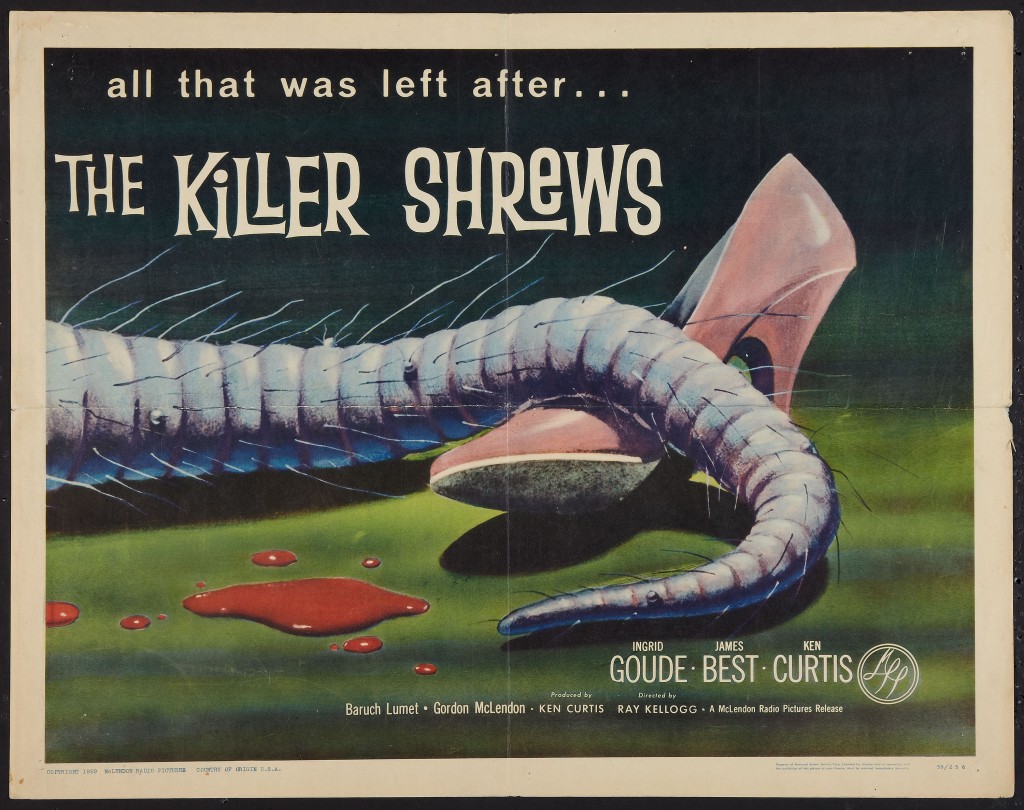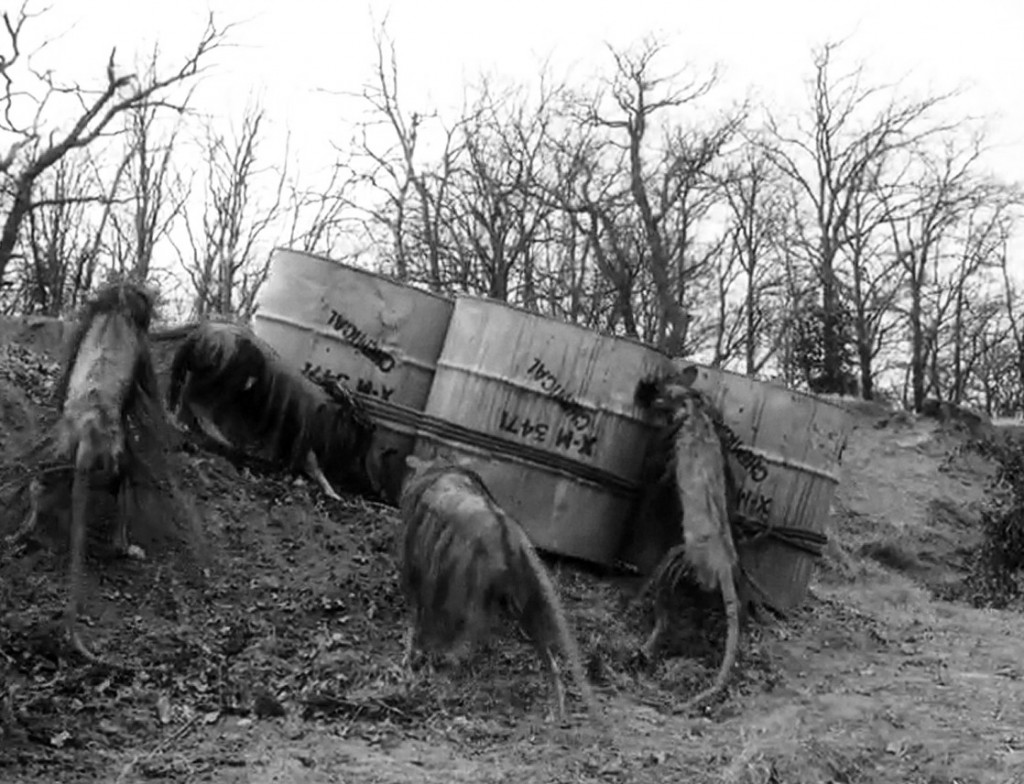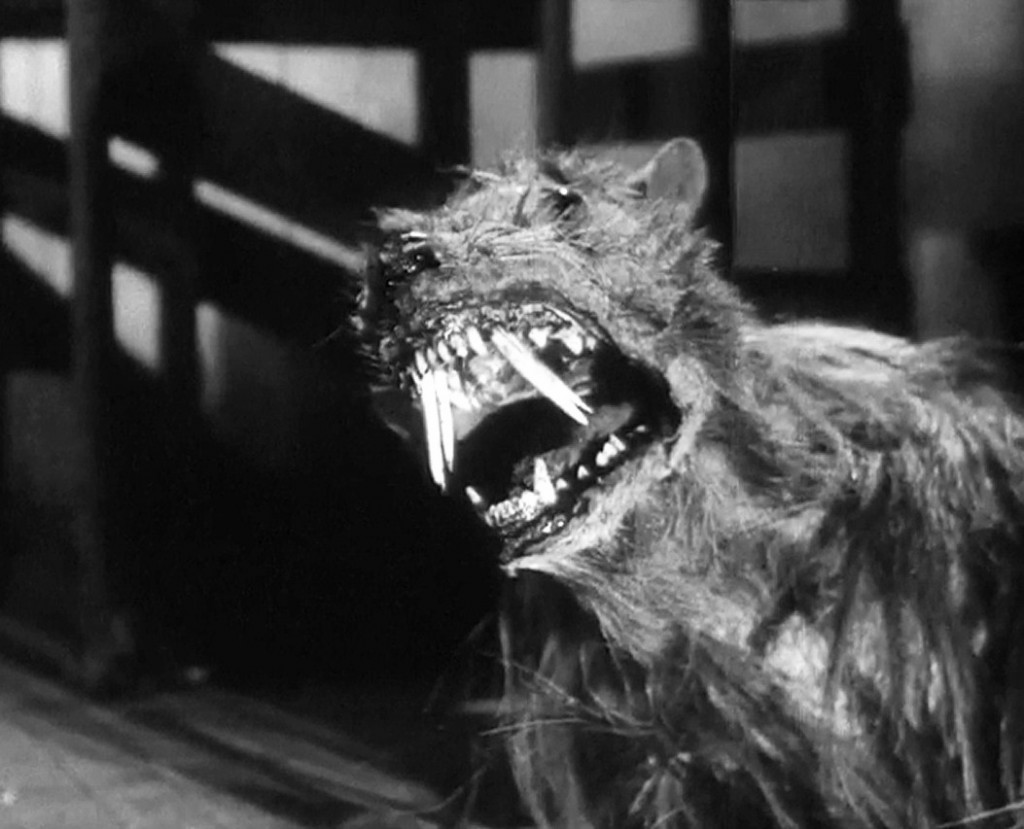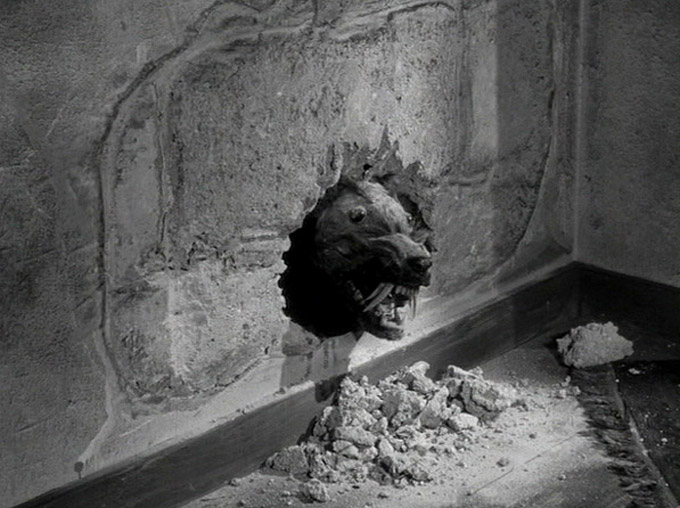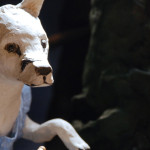Shrews Askew: Ray Kellogg’s ‘The Killer Shrews’
Shrews may seem like a strange choice today for a monster movie menace, but in the 1950s, drive-ins were overrun with all manner of strange invaders—alien vegetables, oozing gelatins, collapsing rock towers, apes with diving helmets and a veritable plague of giant spiders, grasshoppers, lizards, crabs, birds and leeches. That’s why Ray Kellogg, a matte artist at 20th Century Fox, had to get a bit creative when he headed to Texas in the late 1950s to try his hand at regional horror, producing a pair of well-known schlock creature features with distinctive main attractions.
 The Killer Shrews (1959), which resided on the bottom half of a double bill with Kellogg’s more teen-oriented The Giant Gila Monster (1959), might not have featured the most fearsome animal attackers, but it’s surprisingly smarter than his other film. Avoiding the nuclear panic that sparked so many similar sci-fi pictures of the time, The Killer Shrews explored what some believed was a more pressing concern—the overpopulation of Earth. Though ultimately sunk by its sluggish story and cheap, poverty row approach—the shrews themselves are unconvincingly costumed dogs—The Killer Shrews remains one of the more unique films from the decade because of its approach. A new DVD release from Film Chest, released this November, is an acceptable version of this public domain staple.
The Killer Shrews (1959), which resided on the bottom half of a double bill with Kellogg’s more teen-oriented The Giant Gila Monster (1959), might not have featured the most fearsome animal attackers, but it’s surprisingly smarter than his other film. Avoiding the nuclear panic that sparked so many similar sci-fi pictures of the time, The Killer Shrews explored what some believed was a more pressing concern—the overpopulation of Earth. Though ultimately sunk by its sluggish story and cheap, poverty row approach—the shrews themselves are unconvincingly costumed dogs—The Killer Shrews remains one of the more unique films from the decade because of its approach. A new DVD release from Film Chest, released this November, is an acceptable version of this public domain staple.
A hurricane off the coast of Mexico strands Captain Sherman (James Best, The Dukes of Hazzard‘s own Roscoe P. Coltrane) on an island where he’s taken in by a group of scientists, led by Dr. Craigis (Baruch Lumet). Sherman discovers Craigis and his team are working on a vaguely articulated experiment meant to solve overpopulation, but he’s more interested in Craigis’ daughter Anne (Swedish beauty pageant queen Ingrid Goude), the fiancée of gun-toting hard nose Jerry (Ken Curtis). There’s bigger fish to fry once the experiment goes catastrophically wrong, somehow enlarging the island’s population of shrews—hundreds, we’re told—to dog-sized creatures running rampant. As a small farm tended by the scientist is stripped of its livestock, Sherman’s first mate, Rook (Judge Henry Dupree) is attacked and killed, and the shrews soon turn their attention to the tasty morsels hiding in the island’s small adobe house.
As the titular menace, shrews turned out to be an apt choice in this instance. These mouse-like creatures are known to eat almost 90% of their own body weight in food daily, making them ideal for novice screenwriter Ray Simms’ look at how too many empty stomachs can drive society into chaos in a way not frequently considered in the atomic age. Though thinkers as far back as the 18th century had considered the devastating effects of overpopulation, the issue rose in prominence during the 1950s, with reports that 2.5 billion people resided on Earth in 1950 alone (now more than double that figure). Scientist Karl Sax warned of global famine in his 1956 books Standing Room Only: The Challenge to Overpopulation and The Population Explosion, while Aldous Huxley directly addressed the problem in his 1958 book, Brave New World Revisited.
The concern was also intrinsically tied to the birth control debate happening throughout the 1950s, as many countries considered national policies to curtail the population. Hong Kong declared the country had no more room while others including India, Pakistan and Japan considered enacting family planning programs. Closer to home, the post-World War II baby boom had also caused concern in academic circles about what the future might look like if humankind kept reproducing at an exponential rate.
It may have initially been inspired by Sax’s research, but Craigis’ theory—which bizarrely involves shrinking humans to extend existing and future food supplies—falls firmly into mad scientist territory (wouldn’t enlarging food make more sense?). Even more curiously, Craigis achieves the exact opposite of what his theory calls for, accidentally enlarging ravenous creatures that eat almost everything on the island in record time. How these shrews came to be killers doesn’t make much sense, but their attacks are really meant to illustrate Sax’s imagined future where food production can’t keep up with hungry mouths. Craigis notes that the shrews, once out of food, will not hesitate to eat their own to survive at any cost, and the implication for humans is obvious.
Audiences who caught the film on its original run with his The Giant Gila Monster surely saw a disconnect between the two efforts, despite sharing a director. Kellogg’s more successful The Giant Gila Monster features likeable clean-cut teen heroes who go to swinging rock ‘n’ roll dances and attack the creature with their souped-up hot rods. The Killer Shrews, on the other hand, features a handful of neurotic adults and is marked by ponderous dialogue scenes, as Captain Sherman, Dr. Craigis, Jerry and Ann sit around a sparse living room set to drink, smoke and drink even more. When not discussing the shrews, they’re engaging in tired dramatics as Anne predictably falls for the handsome sea captain – seeing in him a chance to escape the shrew invasion – and the drunken Jerry.
The Killer Shrews also fails to measure up on other levels. Kellogg employed a real lizard and miniature sets to achieve his main menace in The Giant Gila Monster. It’s an obvious, but fun, effect. Here he has simply added extra fur accessories to a half dozen dogs and commissioned a shrew-head puppet for close-ups. Only once the film shifts into a siege thriller, as the shrews chew their way through the walls, does the action approach something resembling excitement, prompting Sherman to fashion a “tank” from lashed together oil drums in an attempt to make it back to his boat.
Despite this last-minute reprieve from tiresome drawing room drama, The Killer Shrews has little appetite for thrills or chills. But as one of the only horror/sci-fi hybrids to go beyond nuclear fallout and play on other nagging fears of the time, it’s at least notable, if not exactly memorable. The film’s solution to the overpopulation problem may be just as unbelievable as Kellogg’s makeshift giant shrews, but the future it envisions is grimly plausible—a hellish apocalypse that has little to do with atomic explosions.

 November 5, 2014
November 5, 2014  No Comments
No Comments
